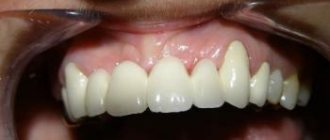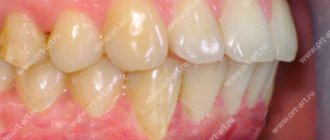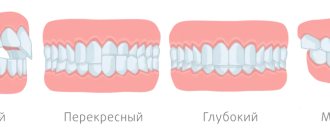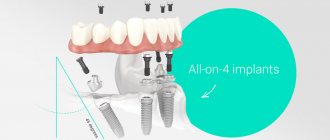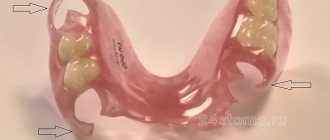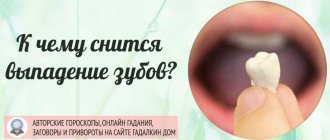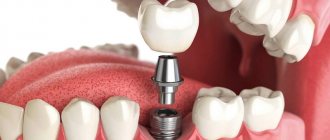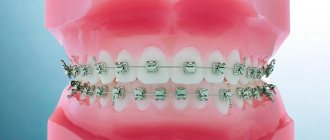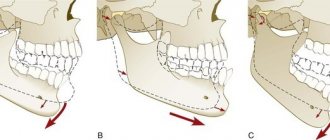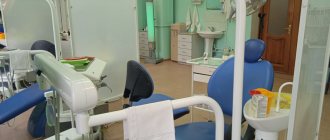Growing teeth
Growing new teeth - at least in three rows, if desired - is just around the corner. Scientists have discovered genes that are responsible for the formation of tooth enamel and the growth of entire teeth. And they were able, at their own discretion, to either deprive animals of their teeth or grow teeth anywhere.
Researchers from the University of Zurich, led by Professor Thimios Mitsiadis, found that the rudiment of the face and dental system is formed during fetal development from the epithelium and mesenchyme of the embryo. Violation of this process leads to the development of maxillofacial pathologies - defects in the development of teeth, cleft lip and cleft palate.
Scientists decided to conduct research on special transgenic mice to find out the pattern of temporal and spatial involvement of genes in the development of the dental system and face. And at the same time, accurately determine which genes are responsible for caries and destruction of dental tissue.
Toothless mice
For the experiment, the transcription factor of the Tbx 1 gene was artificially disrupted in experimental animals. The absence of this gene plays a fundamental role in the development of DiGeorge syndrome, in which a person develops a number of deformities of the heart, thymus, parathyroid gland, face and teeth. And also tooth enamel, which the authors of the work call “the hardest organic tissue.”
Tooth enamel, according to researchers, is formed by the mineralization of certain proteins that are secreted by the epithelial cells of the tooth - ameloblasts. These cells produce enamel until the tooth begins to emerge from the gum.
It turned out that mice with Tbx 1 disabled had a deficiency in both enamel and ameloblasts. True, laboratory animals did not live very long and scientists had to complete the experiment on long-lived tissue cultures, which made it possible to trace the growth of teeth to full maturity.
Mitsiadis’s colleagues at the University of Oregon also discovered a connection between enamel production and genes. However, according to their data, the lack of enamel is affected by turning off the transcription factor of another gene - Ctip 2.
Stem cell teeth
Scientists from Zurich also found that Tbx 1 is involved in the production of dental epithelial stem cells, which in turn form ameloblasts. Therefore, Mitsiadis believes that in some cases, stem cells can be used for restorative therapy for genetic abnormalities of teeth. “These cells may be useful in the future for new transplantation technologies,” explains the professor. “Understanding the genetic mechanisms that control the growth and restoration of teeth will allow us to produce new products and tissues to replace injured and diseased teeth. Although you shouldn’t rely only on stem cells.”
Mice with cleft mouth and shark teeth
Researchers from the University of Rochester Medical Center, led by Dr. Rulang Jiang, decided not to stop studying the origins of tooth enamel. They decided to find out how the teeth themselves grow. And for this, we also turned to the period of facial formation during fetal development.
For science, laboratory mice again had to “suffer with their teeth.” Scientists have bred modified animals in which the Osr 2 gene, apparently a “colleague” of Tbx 1, has been “turned off.” Its “area of responsibility” included the prevention of tooth deformation and the appearance of a cleft palate, a congenital defect in which the two halves of the palate do not connect, forming a gap.
“Knocking out” Osr 2 led to the fact that mice were born with a cleft palate. In addition, their teeth grew beyond the normal growth line. This fact interested Jang so much that he decided to leave the cleft palate alone for a while and focused on studying the ways in which teeth grow .
The first sign of tooth formation in mammalian embryos is the thickening of the epithelium along the jaw line. This suggests that a group of cells has formed, which is called the dental lamina. Since all teeth are subsequently formed from this plate, scientists hypothesized that some special quality of epithelial cells makes them suitable for this process. Previous studies have shown that teeth could arise from epithelium that is not normally involved in the dental lamina. But scientists did not know how signals for tooth growth outside the boundaries of the dentition manifested themselves.
Studies in other laboratories have also shown that the bone morphogenetic protein Bmp 4 is required to initiate tooth growth. It has its own “signal amplifier” protein, Msx 1. So Jang and colleagues hypothesized that there was some unknown factor that limited the deficient mice. Osr 2 teeth growth in one row, blocking Bmp 4.
Further research showed that the concentration of the active Osr 2 gene increases in the jaw bud from the cheek to the tongue. And the concentration of Bmp 4 increases in the opposite direction. Moreover, if Osr 2 does not work, then the activity of Bmp 4 extends beyond the dentition, and is not limited only to the dental plate. And then teeth can grow far beyond the “traditional” dentition for mammals.
Where to grow teeth
Jang again did not stop there. He decided to find out why mammals have space between their teeth. And why is it sometimes missing and adjacent teeth look fused together. So the researchers again turned to mice in which both the Osr 2 and Msx 1 genes had been deleted.
Experimental mice that lacked only Msx 1 were unable to grow a single tooth. And those who had both proteins “turned off” only grew their first molars. The experiment allowed scientists to say that even if there is no Osr 2 that puts teeth in place, then the Bmp 4 protein is quite enough for something to grow in the mouth. But without Msx 1, the Bmp 4 signal did not increase enough for the construction of the next tooth in the row to begin.
Professor Jang suggested that Bmp 4 cooperates with other tooth-forming factors and helps create a “demarcation zone” around each tooth where nothing can grow. When a tooth is almost mature, Msx 1 reduces the level of growth inhibition and development of the next tooth begins, controlled by Bmp 4.
Since not only the teeth , but also the jaw, each tooth must receive a signal that the jaw bone has already grown enough for it. Here, according to Jang, lies the mechanism of cleft palate formation.
The Rochester team's plan is to precisely trace the genetic circuit that controls the copying of teeth and the development of the palate. Well, in order to keep up with colleagues from Zurich, understand how stem cells can be used to treat cleft palate. And growing teeth from scratch.
Materials about the difficult formation of teeth into place can be read on the website of the University of Rochester Medical Center in the journal Science.
And the authors of the study wrote about how tooth enamel appears in the journal Development Biology and on the website of the University of Zurich.
As the saying goes, teeth are a real deal. But soon, it seems, it will be possible to acquire not artificial teeth, but real ones. Only teeth grown in vitro. Japanese scientists told us this.
Japanese scientists reported that they were able to replace a mouse tooth with one grown in the laboratory from cells and functioning similarly to the original one.
To grow a full-fledged tooth, scientists used primitive cells that are slightly higher than stem cells - mesenchymal and epithelial. An injection of cellular material was made into a collagen scaffold supporting the entire body.
After growing the tooth, they found that it was about 1.3 millimeters long and had taken on a mature form that consisted of complete parts such as dentin, pulp, vessels, periodontal tissue and enamel. The scientists then removed the incisor of the eight-week-old mouse and implanted a grown tooth in its place. An examination carried out two weeks later showed that the new tooth was growing exactly like an ordinary one, it had taken root and was functioning absolutely normally.
Growing a tooth was just the first step in the development of this revolutionary and promising technology.
Thus, the operation was the first successful experience in successfully replacing an entire organ with bioengineered materials. The researchers note that there are two ways to grow the tooth: either in organ culture or in a special capsule attached to the liver of another mouse. The growth process takes 14 days.
This method will make it possible to grow entire organs from one or two cells, the researchers say, although they do not deny that they still have a lot of work to do to study this truly revolutionary achievement.
Indications and contraindications
Implantation of natural teeth is indicated in the absence of any tooth - in the smile area or in the chewing region. The purpose of such an operation is to restore the full functioning of the dental system, which is very important for children and adolescents.
But this technique also has contraindications:
- lack of sufficient space for transplantation between adjacent teeth;
- autoimmune diseases, disorders of the endocrine, cardiovascular, and nervous systems;
- local inflammation or infection;
- impaired bone tissue restoration;
- insufficient oral hygiene.
Also important is the patient’s psychological readiness to follow all the doctor’s instructions and the ability to undergo such an operation, since it is performed in childhood and adolescence.
New ideas
The desire to get a third row of teeth has long excited the minds of scientists, prompting them to develop original theories, which can be divided into two groups that have completely different bases:
- the first group is based on the possibilities of psycho-social reprogramming , allowing you to grow a tooth yourself, following the developed algorithm.
- the second uses the latest advances in bio-engineering .
So far, both groups of theories are at the development stage, although adherents are already actively trying to implement them in practice.
These technologies are united by one common direction - the use in growing teeth from immature stem cells, which are responsible for renewing organs by turning them into specific ones.
Such cells are found in all tissues and are used by the body for regeneration processes as needed.
Side effects
Despite the success of all recent research, these developments are still not being actively developed. This is primarily due to the side effects that may accompany this procedure.
When replanting a tooth or growing it, it is impossible to control the growth rate of each of its elements. In a normal process, the neurovascular bundle should develop at the same rate as dentin.
Otherwise, you can get an initially pathological crown , which can affect both the health of the oral cavity and any body systems.
There is also a problem associated with the body's immune response to the introduced cells. Perceiving them as foreign bodies, the immune system will reject them in every possible way.
To minimize the risk of such a situation, the patient will have to take serious dosages of immunosuppressants, which can completely deprive him of immunity for life.
The main disadvantage of the ongoing developments is the lack of a combined approach that would take into account all the nuances of this procedure and its consequences.
How it all began
Trial developments in the field of artificial teeth growth date back to the 2000s. It was during this period that English specialists in 2002, for the first time in the world, launched a program to study methods for building hard tissues , using first rats and then a young pig as a prototype.
The project was led by Pamela Yelick, already at that time known in scientific circles as a talented scientist with avant-garde views. For six months, she studied dentin transferred to a thin polymer, and only after the decay processes in it were completed, she implanted its fragments into rats.
This brought the first results - it was possible to obtain completely new tissues, the structure of which did not match the quality of dentin, had an abnormal root and did not have the required hardness. However, the ice has broken. Four years later, the Japanese became interested in the project and joined the experiment.
They managed not only to grow a new organ, but also after implanting it into experimental animals, they received a fully formed solid component. The only negative is the complete absence of a root system.
After another 2 years of work, doctors moved forward - specialists were able to grow a nerve fragment, which turned out to be capable of carrying out cell nutrition processes. It became clear even to skeptics that the experiment was a success and the idea of artificially growing organs is a close reality.
Today, American and Russian doctors are working on this problem, and domestic specialists, ahead of their foreign colleagues, are already offering patients who want to take part in testing the development to try the technique on themselves.
There are a huge number of those who are ready to become the first owners of a scientifically grown tooth, which indicates the feasibility and economic profitability of the project.
We suggest watching the following video:
Possible complications
Like any medical procedure, this technique, even with relatively positive dynamics, may subsequently experience certain complications:
- rejection of the implanted material;
- unexpected anatomical cell mutation;
- failure in the functioning program of the stem elements.
Unfortunately, it is not yet possible to completely guarantee that at least one of these side effects can be deliberately avoided.
Stock
-10%
Dental restoration All-on-4 RUB 310,000.
280,000 rub.
get -16 %
Premium implantation Nobel and zirconium dioxide crown 125,000 rub.
105,000 rub.
get -11 %
Segment of chewing teeth with prosthesis on day 3 135,000 rub.
120,000 rub.
get -40 %
Teeth cleaning and whitening RUB 5,000.
3000 rub. get
Practical use
In our country, laboratory experiments on growing teeth have not been described, but several large dental centers are already offering the implantation of stem cells into the gums for this purpose, guaranteeing a service life of up to 5 years.
Those who want to carry out such an experiment on themselves write a receipt of consent to the procedure and pay about 3 thousand euros for growing one tooth. If unsuccessful, a second attempt is made for 50% of this amount.
In terms of price for services, cultivation is comparable to implantation, but looks more attractive.
Our clinics have not yet accumulated data on the dangers and prospects of stem cell transplantation.
Innovative techniques
It has already become clear that growing teeth is a reality that will soon find its application. There are currently several ways to do this. The methods are innovative and are still being finalized, but have excellent prospects for widespread use.
Introduction of stem cells
The most popular topic in scientific genetics. Certain manipulations carried out by scientists with stem cells taken from a living organism provide a unique opportunity to recreate and bring back to life any lost or damaged part of the body, including fragments of the oral cavity.
To begin the growth and development of tissue, you simply need to take a set of stem cells, perform a series of molecular operations on them, and implant them into the desired area of the body. After this, all actions stop for a certain time, and the tooth begins to gradually acquire the specified size and shape.
The ideal solution for such actions is cells from gum tissue or brain fragments. The downside is that the latter method of extracting material is more painful for the patient, which limits the possibility of its use.
Currently, scientists have learned to use adjacent healthy fragments of the jaw row as an initial component. So far everything is tested only on animals, but with a rather optimistic forecast.
Watch the video about the breakthrough in modern dentistry.
Exposure to ultrasound
The technique involves an absolutely painless procedure at all stages of the tissue extension process. The operating principle is as follows.
With the use of point ultrasound, the flow of its vibrations reaches as accurately as possible the area in which a new tooth will subsequently appear, fully performing its functions. The pulses provide long-term, targeted stimulation of the desired area of the gum.
The technique does not seem as simple as the one described above, however, it can absolutely objectively be called the most original and unique. In addition, there is enormous potential for opportunities that could open up enormous opportunities for prosthetics and dental practice in general.
Installing a zirconium crown on a front tooth, its advantages and disadvantages. In this article, see photos of crossbite and read about methods for correcting it.
Follow the link https://dr-zubov.ru/ortopediya/uxod-o/gramotnyj-za-implantami-posle-ustanovki.html if you are interested in how to properly care for dental implants.
Laser exposure
Laser correction is one of the most fantastic ideas ever put forward in this regard. However, it is considered to be quite real. The operation is painless, like all similar technologies.
Having studied and tested animal cells in detail, experts noticed the emergence of new, oxygen-containing molecular structures that became a product of laser radiation.
Under the direct influence of the molecules, damaged tissues were restored and new tissues were formed. Thus, the regenerative ability of tissues to recover from their laser treatment was proven.
A little later, the experiment was carried out on human cells. And again a positive result - the tissues became more active and began to recover.
Criticism
There are some scientists who do not believe in the success of this project and consider the funds spent on its development unprofitable.
They believe that an experiment that was successful with animals cannot guarantee that the same will happen with humans, and that the work of stem cells is difficult to control.
They claim that the manipulations themselves are associated with many problems and physical discomfort, and the procedure is quite lengthy.
Also, a number of specialists do not believe that the embryo will be able to take root qualitatively and fully and subsequently function without being rejected by the body, since today the percentage of successful outcomes of such experiments is truly minimal.
